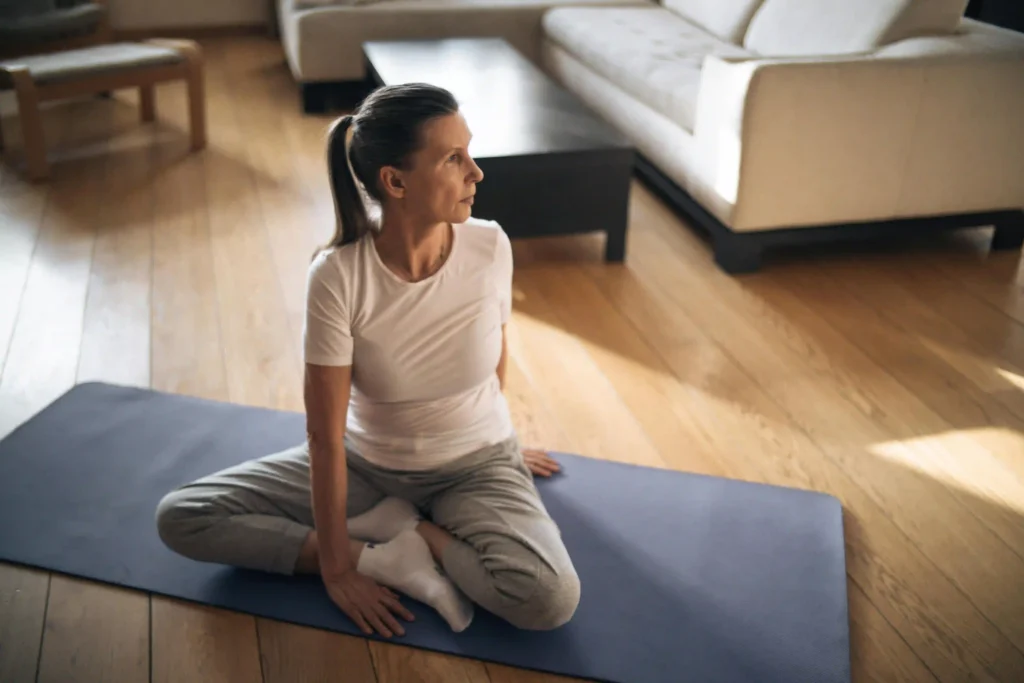Introduction: Exercise as a Powerful Tool Against Cancer

Scientists have established regular physical activity diminishes cancer risks in specifics types of cancer. Studies now show what level of exercise helps prevent cancer and shows its entire range of benefits towards physical activity. Now we will explorer what Experts Pinpoint Amount of Time You Must Exercise to Cut Cancer Risk
Table of Contents
The Recommended Time: How Much Exercise Do You Need?
Adults should exercise moderately 30 minutes every day for five days weekly according to experts to protect themselves from cancer development. The necessary weekly amount comes to 150 to 300 minutes which breaks down to 30 minutes of daily exercise five times per week. You can achieve these guidelines through regular walks at a fast pace or by swimming and pedaling a bicycle at normal speed. The equivalent of running or doing aerobics three to six times for 25 minutes each week meets this workout intensity requirement. The effectiveness of this activity depends on its regular execution throughout multiple weekdays.
How Physical Activity Reduces Cancer Risk
Regular physical activity eases cancer risk through its benefits that control inflammation and ease hormone function while strengthening the immune response. Physical exercise makes for a healthy body weight and helps prevent different cancers since obesity triggers cancer. Physical activity speeds up the passing of food through the colon which reduces our exposure to possible cancer-causing substances. Through multiple systems the body generates an environment that makes it harder for cancer to grow.
What Types of Exercise Work Best?

Doing multiple aerobic activities and strength training exercises will best prevent cancer. The body stays strong and fit when doing aerobic exercises including walking, jogging and swimming. Doing resistance band or weight lifting exercises lets you build more muscles that reduce how fast your body uses energy. Lead a balanced life through yoga because it strengthens your body systems and reduces stress which stops disease development. You can also learn about Woman Loses 10 Kg in Seven Months Through Healthy Diet and Exercise.
The Link Between Sedentary Lifestyle and Cancer
Too much stillness through sitting and resting raises a person’s chances of getting cancer. Being inactive leads to excess body weight plus hormonal problems and weakens your metabolic system. Studies connect prolonged sitting to higher cancer risks of colon, endometrium, and lungs. Regular exercise alone is not enough to counteract the harm done by staying seated for extended times. Taking short breaks by standing, stretching or walking eases the negative impacts of doing nothing.
Expert Guidelines: Weekly Targets for Maximum Protection
Top medical organizations such as the World Health Organization and the American Cancer Society state adults need to exercise between 150 and 300 minutes of moderate-intensity workouts every week or 75 to 150 minutes of active exercises. You will get the best cancer protection when you do aerobic exercise weekly and strength training on two plus days. When people exercise per week they lower their risks of breast and colon cancer and lung and endometrial cancer. At the same time they build better overall wellness and fight diseases at any age.
Real-Life Tips to Reach Your Exercise Goals
Daily activities that include movement make exercise easier to do. Walking or cycling to work plus using stairs helps you reach your goals as home workouts through fitness applications. Suddenly organize physical activities within your daily schedule to keep yourself active regularly. Set shorter intervals of walking if you need them—the benefits will match a daily total of three 10-minute sessions. Participate in fun exercises that lead you to fitness naturally while avoiding exercise feeling like work.
Who Benefits the Most from Regular Exercise?
Regular exercise helps every person but several specific groups see greater advantages. Having cancer or being overweight in a family plus growing older leads to the biggest benefit in cancer prevention. Women who passed through menopause experience less risk of developing breast and uterine cancer with exercise. Regular physical activity strengthens cancer patients as it lessens fatigue levels and improves their mental health and overall strength. Your personal circumstances make no difference because physical activity builds both your health and toughness.
Other Health Perks of Staying Active
Daily exercise helps fight cancer and builds many additional protective benefits. Daily workouts make the heart stronger and better lung capability while lowering blood pressure and managing blood sugar. Physical workout makes people less anxious and depressed while improving their mood and sleep patterns. The body weight stays healthy while becoming stronger through physical activity. Physical activity provides both longer life and better quality life experience.
Final Thoughts: Make Movement a Daily Habit

Regular movement offers the greatest advantage to your future health. Keep moving through your preferred activities without intense gym workouts to get better results in health. Any physical activity you enjoy like strolling fast or dancing will make positive changes. Design a habit that respects your daily life then keep track of your progress through small achievement celebrations. Sticking with daily movement will make it a natural behavior as you increase your health while decreasing your cancer chance.
1. How much exercise is needed to lower the risk of cancer?
According to researchers adults should exercise moderately for 150 to 300 minutes each week combined with strength training exercises two times per week. Regular physical activity at this level makes it easier to avoid developing breast, colon and lung cancers.
2. Can regular physical activity actually prevent cancer?
By exercising regularly a person maintains healthy weight while improving their immune system and reducing inflammation which combined helps prevent cancer formation. Despite not being a certain cure it makes cancer development less likely for various forms of this disease.
3. What are the best exercises for reducing cancer risk?
A combination of cardio activities plus weight training exercises creates the most effective protection against cancer development. Physical training helps the body burn calories better and maintain better body systems to protect against cancer.
4. Is walking enough to protect against cancer?
Regular brisk 30-minute walks for five days per week helps decrease one’s cancer threat. Doing walking at a moderate pace as exercise benefits your circulation and helps you manage weight while protecting your health.
5. How does a sedentary lifestyle increase cancer risk?
Being physically inactive boosts your risk for developing cancer through combined weight gain plus hormonal and metabolic issues. Sitting for long periods and being inactive easily hurts your immune system defense. Regular movement throughout the day helps counter these negative effects significantly.